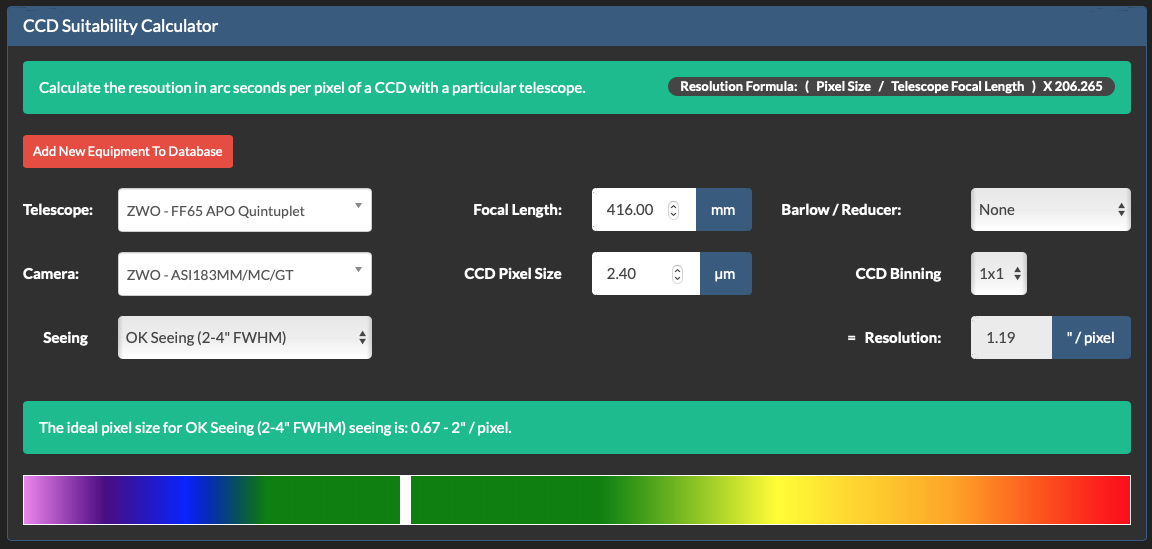I recently collected some data on the Squid nebula and am underwhelmed with the result so I'm wondering if I'm doing something wrong. Here's the specs and the result:
ZWO FF65, ASI183MM Pro, ZWO 7nm Oxygen filter
78x 300 second subs (6.5 hours), 120 gain, Bortle 5, no moon
Very basic & quick processing to see what the signal was like: Graxpert, BlurX, StarX, STF stretch
I've had a chat with some friends and the following suggestions came up. I'm not convinced that any of this would be beneficial though:
Use a camera with bigger pixels like the 533 or 2600 as the pixels will collect more photons
Use a 2x Binning
Someone also suggested that unity gain for the IMX183 is 400 - I'm fairly sure this is incorrect & unity gain for this camera is 120.
I do understand that this target is incredibly dim and I have no problem spending 50+ hours on such a target, especially when using a fairly small aperture scope but I want to make sure I'm not making any mistakes in data acquisition before I devote so much time to it.
Thanks in advance for any help or advice!

ZWO FF65, ASI183MM Pro, ZWO 7nm Oxygen filter
78x 300 second subs (6.5 hours), 120 gain, Bortle 5, no moon
Very basic & quick processing to see what the signal was like: Graxpert, BlurX, StarX, STF stretch
I've had a chat with some friends and the following suggestions came up. I'm not convinced that any of this would be beneficial though:
Use a camera with bigger pixels like the 533 or 2600 as the pixels will collect more photons
Use a 2x Binning
Someone also suggested that unity gain for the IMX183 is 400 - I'm fairly sure this is incorrect & unity gain for this camera is 120.
I do understand that this target is incredibly dim and I have no problem spending 50+ hours on such a target, especially when using a fairly small aperture scope but I want to make sure I'm not making any mistakes in data acquisition before I devote so much time to it.
Thanks in advance for any help or advice!

